Steelhead
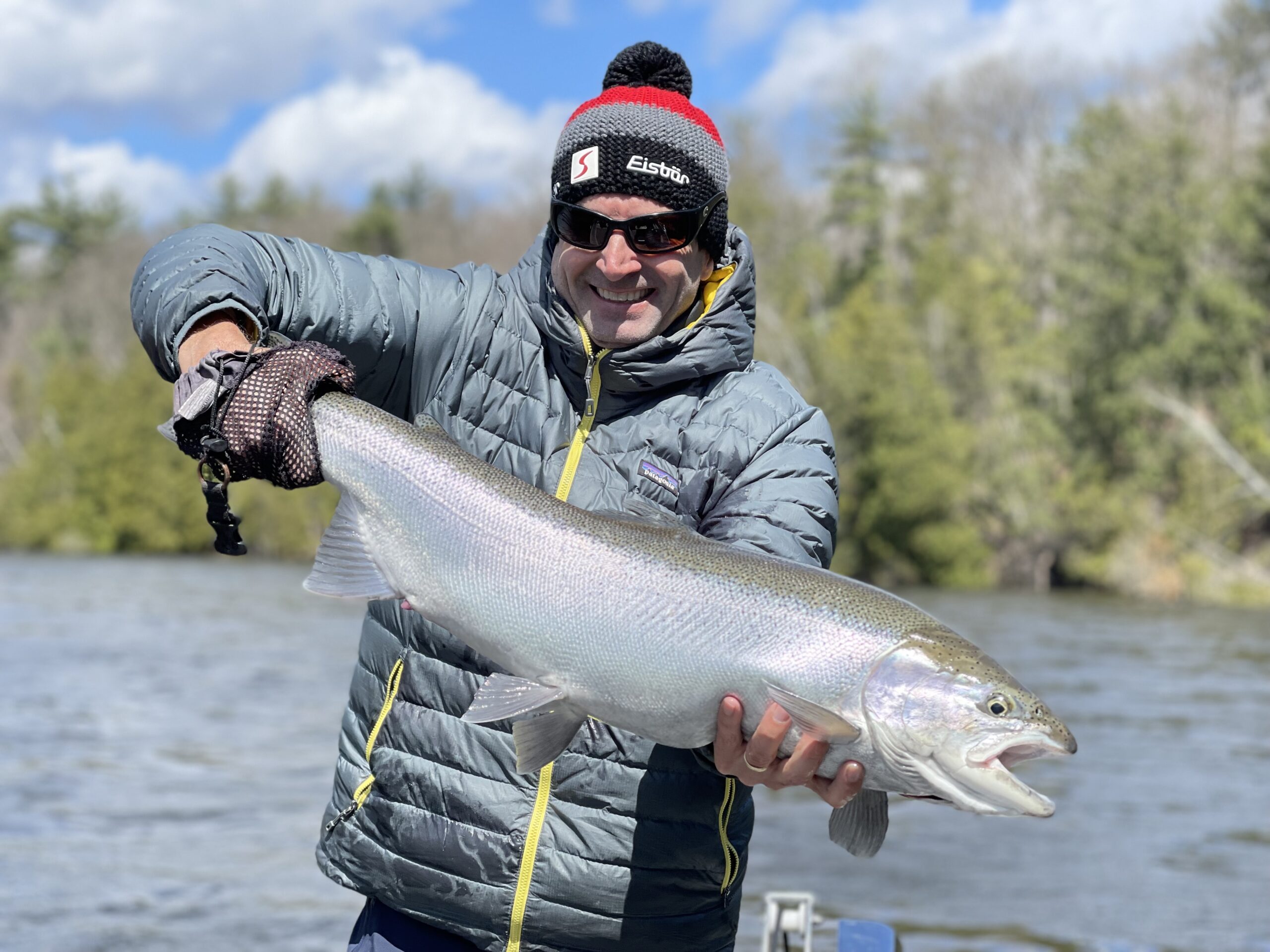
Steelhead, Oncorhynchus mykiss
Identifying characteristics: (Non-Native Fish) Two dorsal fins including one adipose fin, mouth and gums are light, small spots along rays on entire tail, 10-12 rays in anal fin.
Steelhead is a name given to rainbow trout which live in the Great lakes. Rainbow trout are native to the Pacific Ocean along North America and to rivers and other fresh waters of North America west of the Rocky Mountains. They are a popular game fish, and for this reason have been introduced all over the United States.
Great lakes steelhead can be found in all parts of the “water column”, however they’re most attracted to the thermoclines where baitfish often congregate as well. “Thermoclines” are a layer of water, in a larger body of water, where significant water temperature changes take place. It may be only a 3′ “slice” of water, but temperatures can differ by 10 degrees or more.
They can also be found near stream outlets, especially in spring and early summer. In the lake-dwelling part of their life cycle, they wander along the shoals eating plankton, minnows, surface and bottom insects and other aquatic life. Although they feed primarily in mid-depths, they do take surface insects, including fly fishermen’s flies. Larger rainbows will eat other small fish if available.
Great Lakes steelhead enter their spawning streams from late October to early May. At the present most spawning occurs in the spring, although more steelhead are beginning to spawn in late fall or early winter. Spawning takes place in a bed of fine gravel, usually in a riffle above a pool. Steelhead don’t necessarily die after this; they may live to reproduce for multiple years. Most rainbow trout return home to spawn in the stream in which they were born or planted.
Considered by many to be the “crown jewel” of the Great Lakes big game fish, they have incredible leaping ability and are arguably one of the fastest fresh water fish on earth.
Trout eggs hatch in four to seven weeks, depending on water temperature. Young trout may travel downstream to the lake in their first summer, or they may remain from one to three years in their home stream before migrating to lake Michigan.
Individual growth varies greatly even within the same population. Most Great lakes steelhead reach sexual maturity at age three. A mature 16-inch fish living in the Great lakes may continue to grow throughout its life and could reach 36 inches in length and up to 20 pounds in weight. However, average adult size for steelhead in 9 to 10 pounds while life expectancy in the Great Lakes is 4 to 6 years.
Larger fish, fish-eating birds and mammals and sea lamprey are the steelhead’s natural enemies. In turn, the steelhead finds itself competing with other salmon and trout, other predatory fishes and a variety of bottom feeders, for its food. It also competes with salmon and trout for spawning grounds.
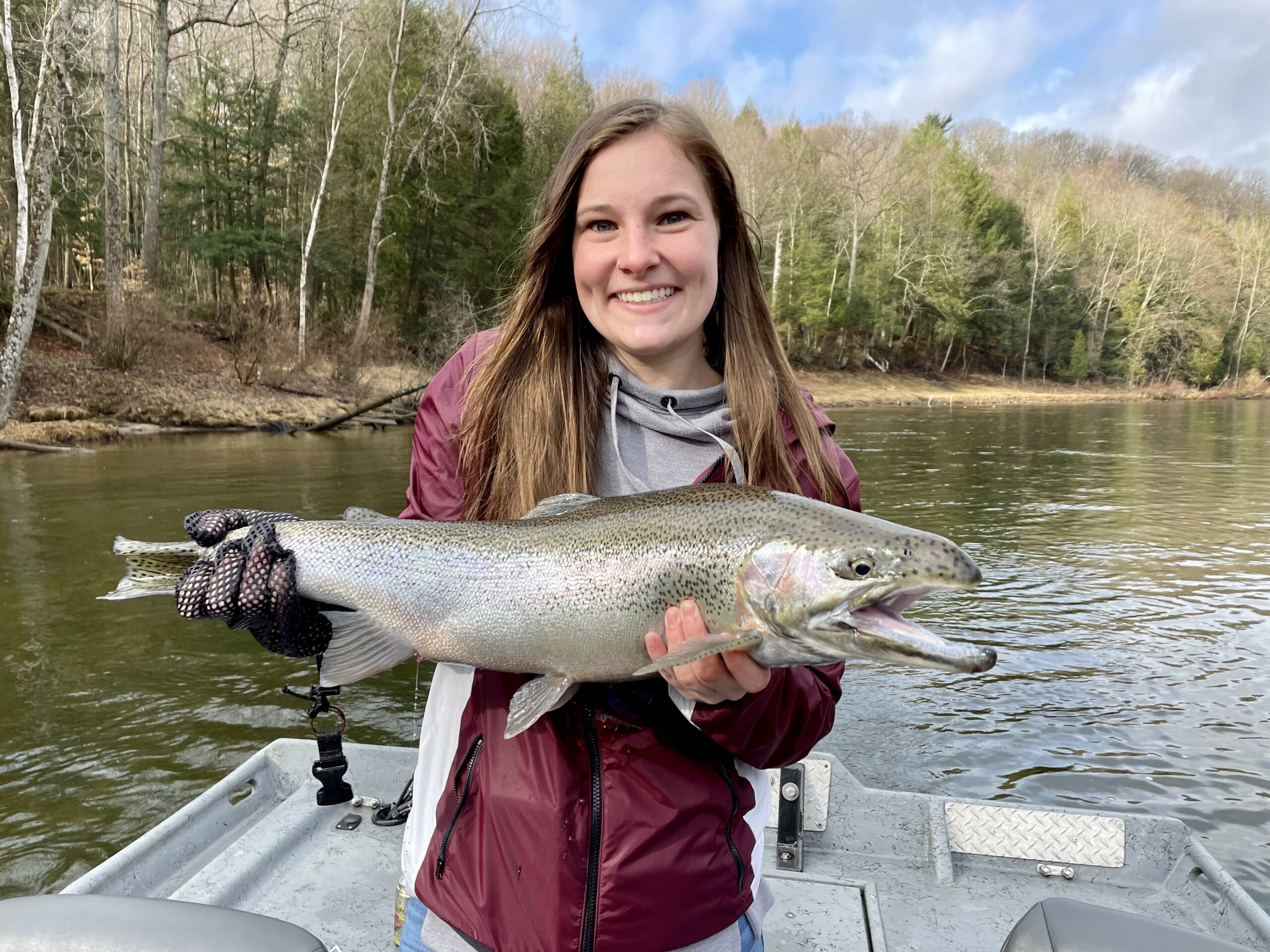
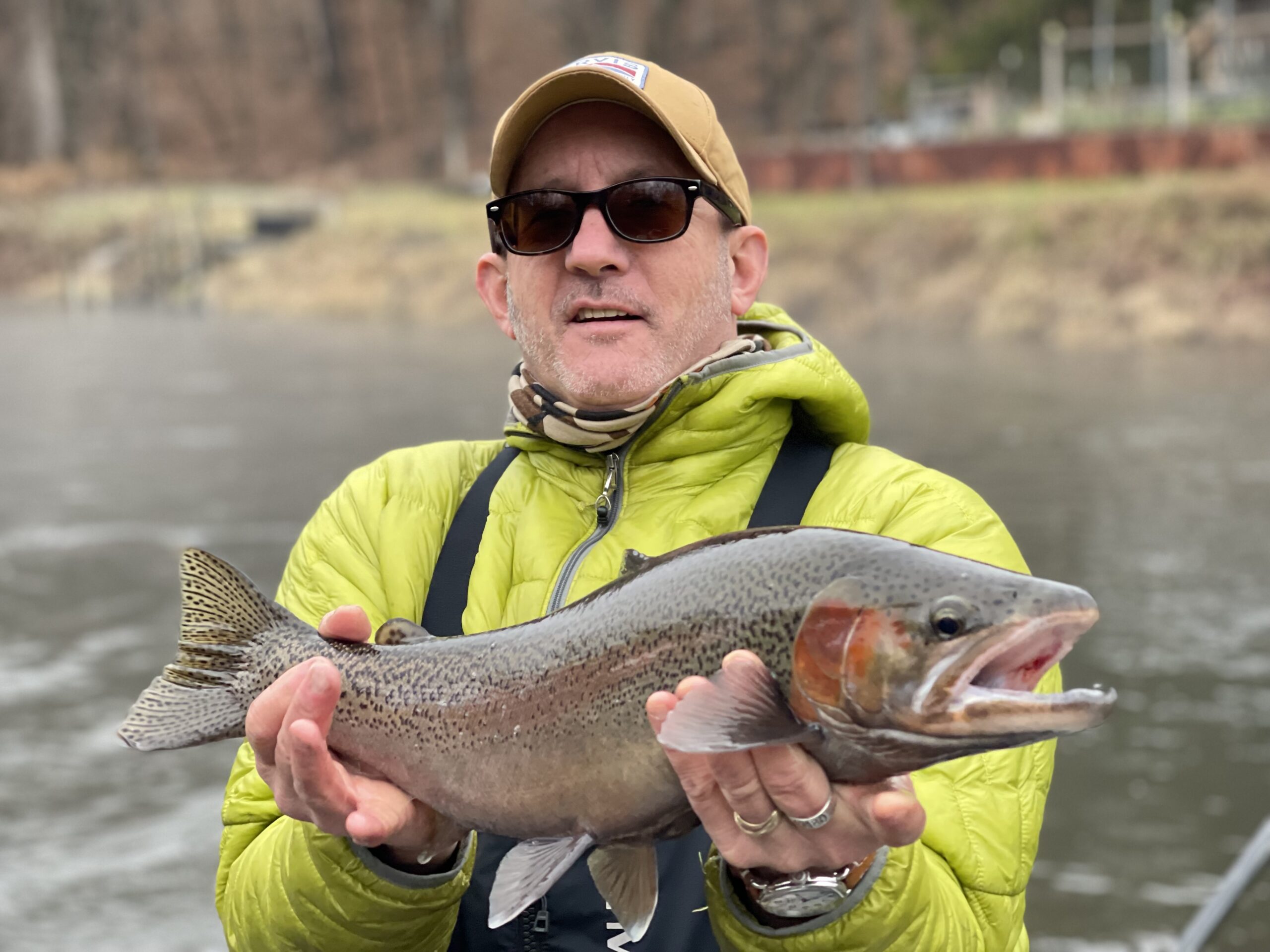
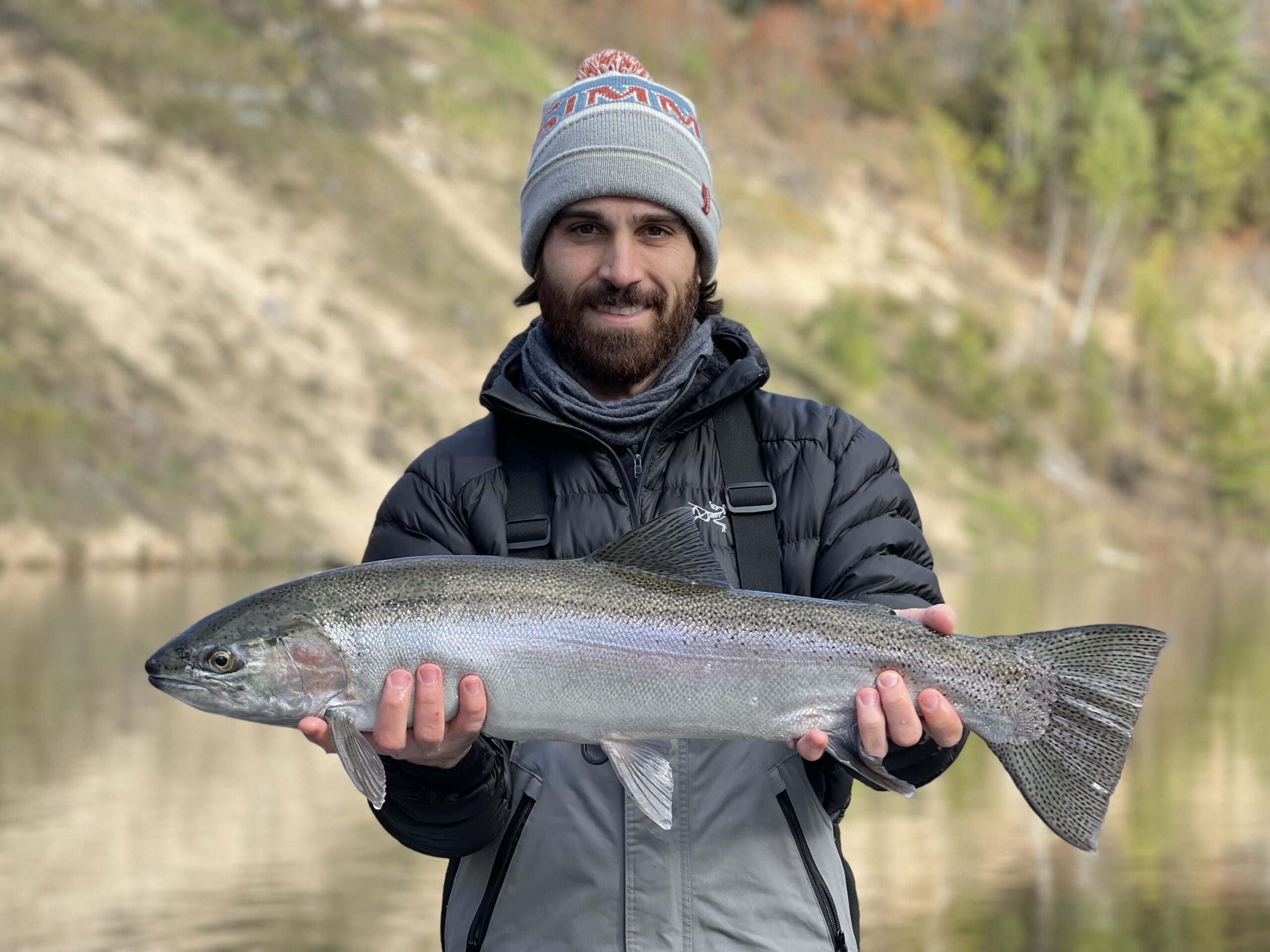
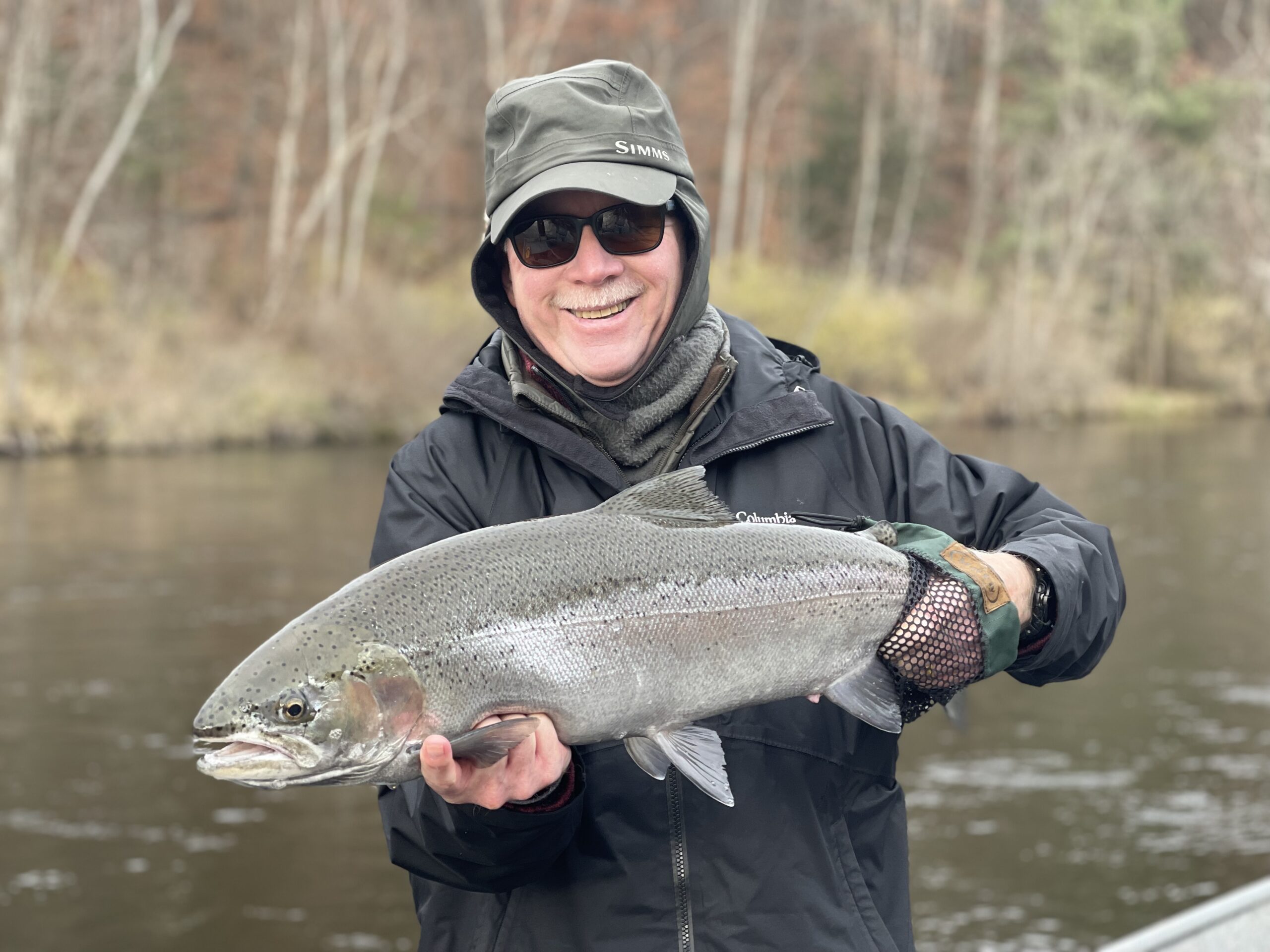
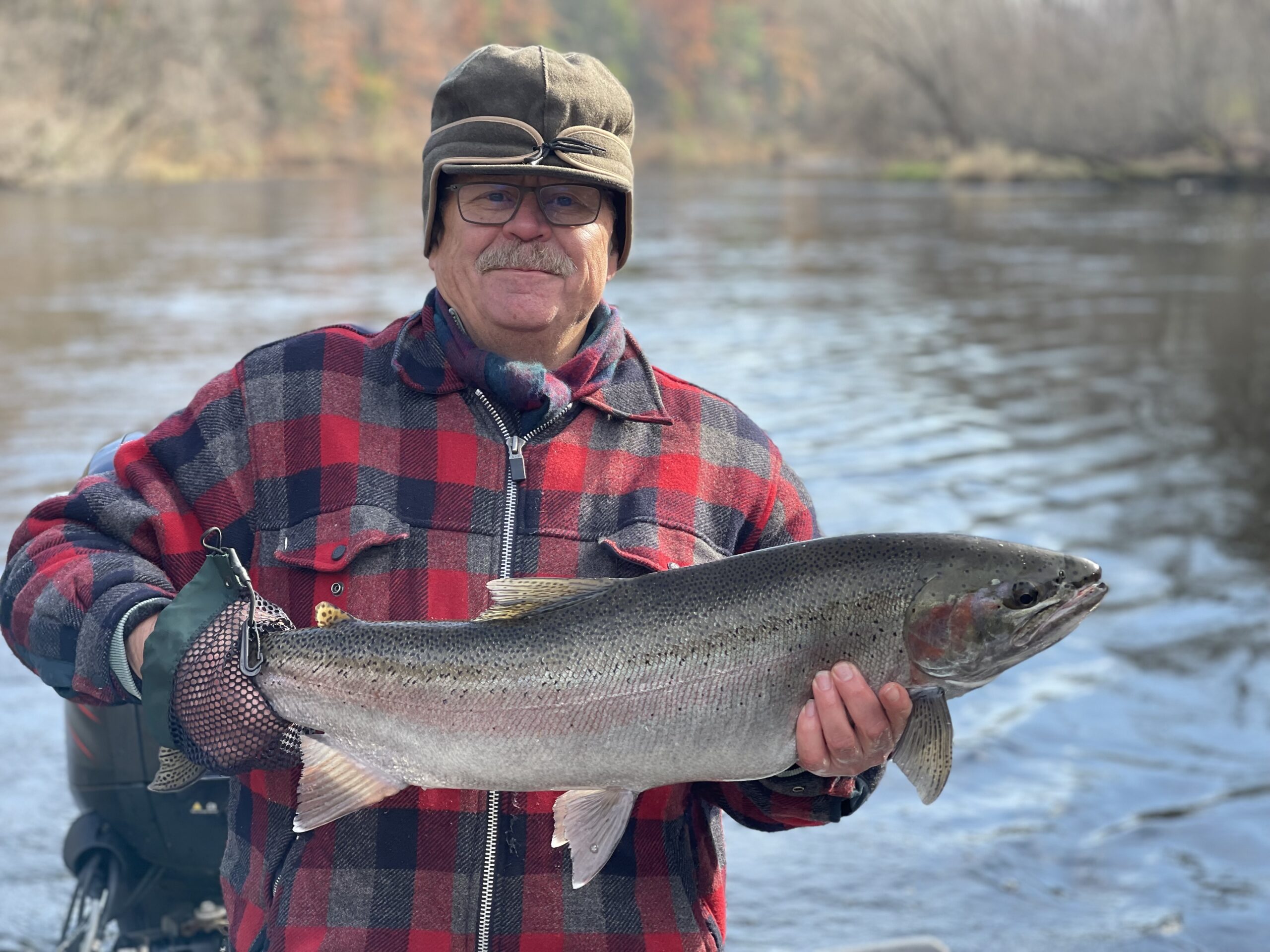
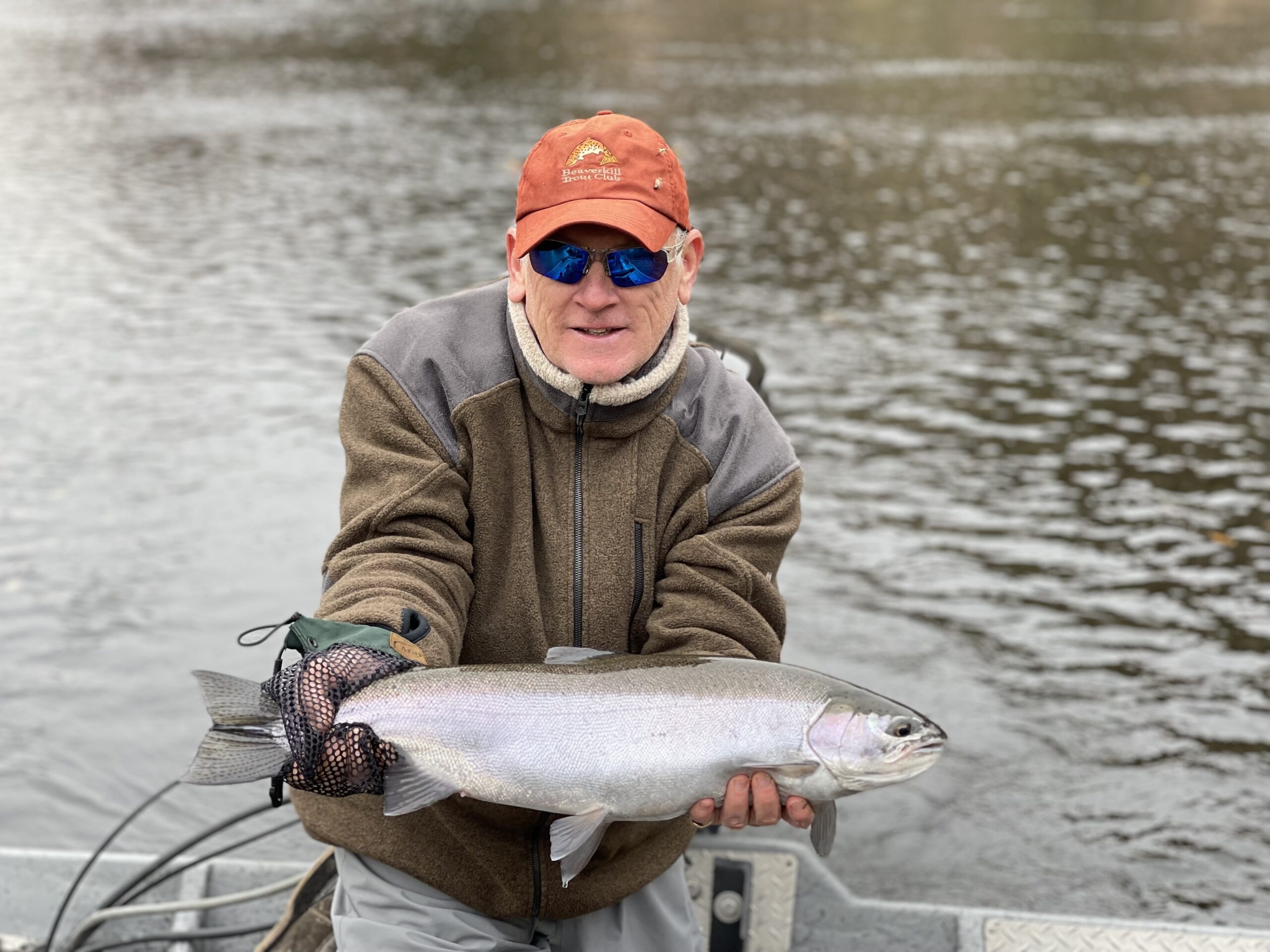
Recent Steelhead Fishing Reports
Muskegon River Fishing Report – April 29, 2024 – Newaygo, Michigan
– April 29, 2024 –
Muskegon River Fishing Report – April 22, 2024 – Newaygo, Michigan
– April 22, 2024 –
Muskegon River Fishing Report – April 15, 2024 – Newaygo, Michigan
– April 15, 2024 –
Interested in Pursuing Steelhead?
Check rates and availability as availability is limited
View Rates